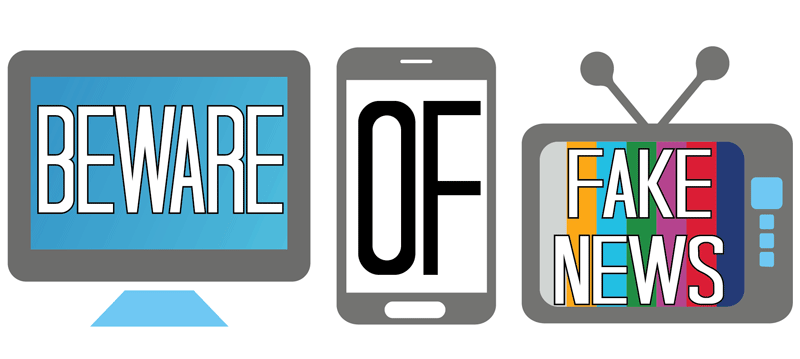Recent fake news phenomenon threatens journalism credibility
February 16, 2017
The sharing of fake news for different reasons has increased recently. New technologies, online access and the increasing popularity of social media platforms are some of the elements that contribute to the creation, publication and spread of misleading information.
A viral marketing strategy for the promotion of a new 20th Century Fox film called “A Cure for Wellness” has used fake news sites to stir controversy and create interest to the movie that is coming out this week.
The websites were created to look like local news media and shared ads from the movie and references to its plot about a “false cure” along made-up stories about polarizing topics such as abortion, politics and vaccines.
Laure Kasovich, instructor of mass communication, said, “Fake news is becoming more noticeable and believable. When someone you trust shares something, you naturally add credibility to it.”
She also said that more and more people are only reading the headlines instead of reading the actual article before sharing.
A survey from the Pew Research Center regarding the sharing of fake news was conducted in December 2016 and was based on 1,002 U.S. adults. It pointed out reasons behind the sharing of faking news and how it goes beyond crediting the articles as accurate.
According to this survey, 16 percent of U.S. adults admitted to sharing fake, political news inadvertently, only to discover later that it was completely made up. Fourteen percent of this same study also admits to sharing fake news, despite being aware of the inaccurate content. Some of these individuals want to spread misinformation, to broadcast the stories as fake, for value and other varying reasons.
Especially during the 2016 presidential election cycle, fake news in political media has circulated the World Wide Web.
Lloyd Chiasson, professor of mass communication, argued that news media is becoming more and more politicized. He said that media outlets are naturally going to be more liberal or more conservative, but it’s to the point that they are creating fake news for the purposes of promoting their political stance.
“Every news media outlet has freedom to express their opinion,” Chiasson said. “However, the media shouldn’t be half democratic and half republican. It should be about 100 percent fairness.”
Moreover, according to the Forbes website, journalists and writers have been using false or misleading stories to persuade and manipulate the public for decades by labeling them as news. For this reason, people will naturally have an inclination to trust media outlets that will confirm what they already believe about certain subject matter.
It’s unlikely for fake news to ever completely go away, so people on all sides of media should take preventable measures to avoid spreading it, according Kasovich.
“I think, as a public, we need to be more proactive in evaluating what we are reading, and, as an industry, I think we need to be more proactive in demonstrating the fact that we are a verified news source,” Kasovich said.
According to Chiasson, because of the fast pace of online journalism, journalists are becoming more concerned with being the first to report information instead of presenting accurate information.
Kasovich suggested to research something that sounds “too good to be true” in order to check its accuracy. If no other article supports the presented information, then that information is typically false.
Before believing and creating opinions based off of all news outlets, it is important to be aware of political bias, satires, leaks, news hoax and simple propaganda.
“Anytime you see something on social media, be skeptical of its accuracy,” Kasovich said.
The question of who actually is responsible for sharing the fake news still remains. Facebook and Google, for example, have received increasing amounts of criticism for being the leading social media platforms for fake news. While still a work in progress, the global media companies have made strides to eliminate fake news.
While fake news in the media is nothing new, the rise of misleading information, satire articles and false content circulating as factual news online has resulted in Facebook and Google to take a stance against it.
The New York Times website published an article stating, “Facebook reaches 1.8 billion people around the globe, and the company is one of the largest distributors of news online. A Pew Research Center study said that nearly half of American adults rely on Facebook as a news source.”
In response to this, the company has launched the “Facebook Journalism Project” in the efforts to mitigate the circulation of fake news. According to the project description, its goal is to collaborate with news organizations, partner with journalists, work with publishers and educators and to equip both journalists and the public to create an environment of “healthy news” in which journalism can thrive.
According to Google’s blog, the company has also taken action against false information by creating technology to detect misleading information. Stopping fake advertisements was one of the main focuses of the company.
In 2016, Google removed 1.7 billion ads that violated their advertising policies, more than double the amount of bad ads they removed in 2015.
